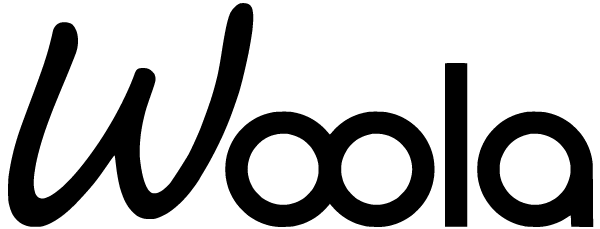30+ Sustainable packaging statistics
The packaging industry relies heavily on fossil fuels, which are the primary source of man-made CO2 emissions. Even more, over 50% of all plastic waste comes from single-use plastics, with 40% from packaging alone. Finding more sustainable ways to package products is a significant way to both reduce plastic waste and reduce our reliance on fossil fuels, which are heating up the planet.
“And it's a fact that the biggest source of climate change is fossil fuels and all the business that come with using fossil fuels.”
— Anna Liisa Palatu, CEO and Co-Founder of Woola
The good news is that sustainable packaging is growing in popularity as both consumers and retailers become more environmentally conscious.
But how well is the sustainable packaging market doing? What has the general consumer response been? And what are the most popular sustainable packaging materials? We’ve rounded up 30+ sustainability packaging statistics to keep you informed.
Sustainable packaging market size and potential
The sustainable packaging market is growing rapidly. In 2020, its market size was valued at 274.15 billion USD.²
Experts predict that it will grow at a compound annual growth rate (CAGR) of 6.1% from 2020 to 2028.²
Europe led the sustainable packaging market with a revenue share of 36.7% in 2020. Much of this growth can be attributed to its large number of end-user industries, including food & beverages, electronics, healthcare, and others.² It’s also largely because of the strict packaging laws gaining ground on the continent. For example, Germany’s Packaging Act imposes a recycling fee on retailers and manufacturers for any packaging that ends up in household waste.
The food and beverage industry is the leading segment in the global sustainable packaging market.⁶
59% of consumers rated the segment as “doing a good job” using sustainable packaging for their products. 42% rated the beauty and cosmetics segments as also doing well in this regard, while 35% voted in favour of cleaning products.⁷
Key Takeaway: The sustainable packaging industry is only starting to bloom. With increasing legislation against plastic use and more environmental consciousness, the market size is set to experience a boom in the near future.
How sustainable packaging supports corporate sustainability goals
Most corporations have lofty sustainability goals, but the majority seem unlikely to meet them anytime soon.
Up to 75% of companies have openly committed to using more sustainable packaging, but less than 30% are well prepared to meet regional requirements, much less internal aspirations.¹
There are several reasons why companies struggle to reach their sustainability goals, but according to McKinsey & Company, four challenges are most common. They are:
Insufficient cross-functional collaboration
A lack of meaningful incentives
Unclear sustainability metrics
Poor employee upskilling.¹
A recent survey by McKinsey & Company found that B2B companies seem to place less importance on sustainable packaging than consumer companies.
Only 66% of B2B and industrial companies have paid substantial attention to packaging sustainability, making sustainable packaging commitments. In contrast, 80% of consumer goods companies have taken this step.¹
90% of public sustainable packaging commitments by corporations won’t be met by 2025, mostly because the majority of these companies rely too heavily on plastics and single-use packaging.⁵
Less than 20% of organisations have trained their employees to incorporate sustainability or implemented meaningful incentives to reach their sustainability goals.¹
Key Takeaway: While many large corporations have good intentions concerning using more sustainable packaging, they’ll need more than that to achieve their goals. Unfortunately, many, especially in the B2B industry, are ill-equipped to reach their sustainability goals.
Consumer attitudes to sustainable packaging
“I honestly believe that the best waste is the one you don't produce or at least the one you can reuse.”
— Nicolas Katkoff, Sales Manager at Woola
64% of buyers say they are more likely to buy products from a brand or retailer if its packaging is sustainable.³
50% of consumers say that they’re willing to pay more for sustainable packaging, and 50% would pay for sustainable delivery.³
The younger generation seems more likely to choose sustainable packaging. 83% of consumers among younger generations showed a willingness to pay more for sustainable packaging.⁶
77% of consumers say they find it difficult to research or understand sustainability claims.³
As buyers demand more sustainability, greenwashing has become common, making consumers hesitant to trust brands’ claims. More than 69% of buyers in one survey agreed that they did not always trust brands and retailers that say they are sustainable.³
“Sustainable packaging” can mean a wide range of packaging options for most consumers. For 73% of consumers, sustainable packaging means that the brand uses recycled packaging. 77% prefer that brands use as little packaging as possible, 78% say it is important that brands minimise their use of plastic packaging, and 73% think that using paper or cardboard packaging is important.³
US consumers rank overall sustainability low as a purchasing factor, compared to other criteria such as price, quality, brand, and convenience (which they rate as more important).⁴
Despite rating other purchasing decision factors above sustainability, 55% of US survey respondents still say they are “extremely or very concerned about the environmental impact of product packaging.”⁴
52% of consumers said they would buy more sustainably packaged products if those products cost around the same as conventionally packaged ones.⁴
The COVID-19 pandemic caused many consumers to think deeply about the impact of their packaging choices. Research by Trivium Packaging shows that during the pandemic, 58% of consumers felt more likely to purchase products with reusable or recyclable packaging.⁶
More than 1 in 3 respondents reported they had decided against purchasing a product because the packaging was not labelled as sustainable.⁶
For 67% of customers, it is important that packaging be recyclable. Unfortunately, research by Trivium Packaging shows that consumer perceptions about what is recyclable tend not to match reality, pointing again to the need for more accurate information on sustainability.⁶
63% of buyers say they’re more likely to purchase products from a brand that has publicly announced sustainability goals and initiatives compared to brands that have not.⁷
82% of consumers say they’re either “very” or “somewhat” aware of the sustainability goals of the brands that they typically buy from.⁷
While consumers often say they are willing to pay more for sustainable packaging, several studies have shown that when given the option to receive products in sustainable packaging, only up to 30% of shoppers actually opt for it.⁸
Key Takeaway: More people want to choose sustainable packaging, but between misinformation on what is sustainable and the economic challenges they face, not as many are willing to spend more on sustainable packaging.
Sustainable packaging materials statistics
A large proportion of the consumer market understands recycled packaging to be “good.” This includes materials like paper, plastic, glass, and metal, which can be recycled. Recycled packaging held the largest sustainable packaging market share of 61.2% in 2020.²
Among recycled packaging options, recycled plastic-type options held the largest share in 2020.²
After recycled plastic-type packaging, paper is the next major sustainable packaging material.²
Despite the popularity of recycled plastic and paper packaging, 33% of consumers rank glass as the safest packaging material. In contrast, only 22-26% of buyers rank other materials, such as plastic, metal, and paper, as safe for packaging.⁴
63% of consumers associate plastic with ocean pollution, and 55% associate the material with being harmful.⁶
Key Takeaway: While recycled plastic is still popular, consumers are turning to other options, such as glass and paper, for safer, more sustainable packaging.
Join the sustainable packaging train
The demand for sustainable packaging is growing fast. More consumers are recognising the environmental damage caused by plastic packaging and holding large corporations and even smaller businesses accountable.
With an ever-increasing number of low impact packaging brands offering innovative solutions, companies have more choices than ever before.
It’s a great time to start investing in unique, sustainable packaging to help your brand stand out. At Woola, we use waste wool that would otherwise be burned or buried to make products that replace plastic bubble wrap. Our products are versatile, safe, sustainable, reusable, and recyclable.
We’d love to send you some free samples and show you how we can customise your packaging.
Sources
[1] Sustainability in packaging: Five key levers for significant impact (McKinsey)
[2] Green Packaging Market Size, Share & Trends Analysis Report (Grand View Research)
[3] Sustainability and the Consumer 2021 (Drapers)
[4] Sustainability in packaging: Inside the minds of US consumers (McKinsey)
[5] Gartner Predicts 90% of Public Sustainable Packaging Commitments Won’t be Met by 2025
[6] Global Buying Green Report (Trivium Packaging)




